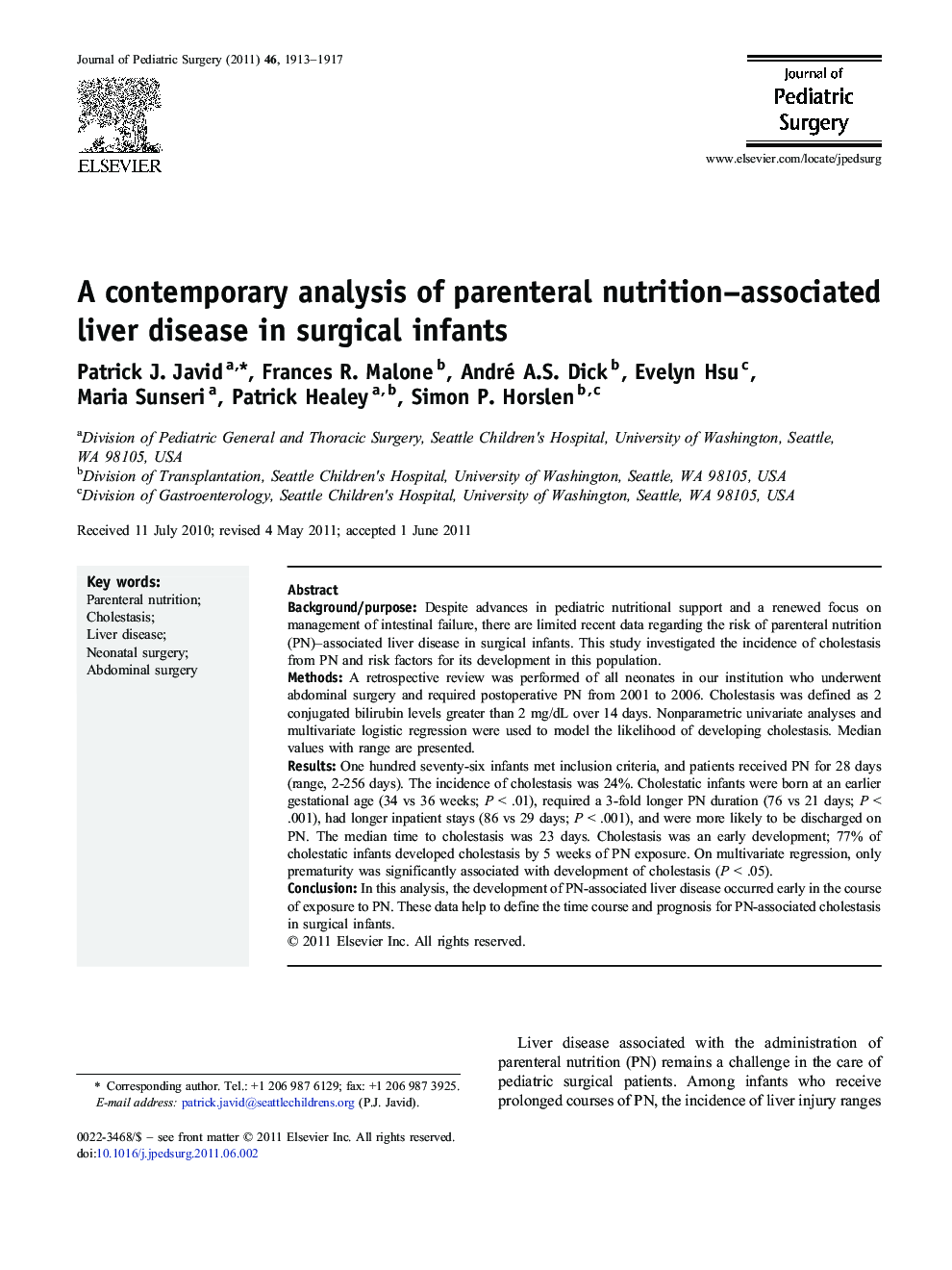| Article ID | Journal | Published Year | Pages | File Type |
|---|---|---|---|---|
| 4156381 | Journal of Pediatric Surgery | 2011 | 5 Pages |
Background/purposeDespite advances in pediatric nutritional support and a renewed focus on management of intestinal failure, there are limited recent data regarding the risk of parenteral nutrition (PN)–associated liver disease in surgical infants. This study investigated the incidence of cholestasis from PN and risk factors for its development in this population.MethodsA retrospective review was performed of all neonates in our institution who underwent abdominal surgery and required postoperative PN from 2001 to 2006. Cholestasis was defined as 2 conjugated bilirubin levels greater than 2 mg/dL over 14 days. Nonparametric univariate analyses and multivariate logistic regression were used to model the likelihood of developing cholestasis. Median values with range are presented.ResultsOne hundred seventy-six infants met inclusion criteria, and patients received PN for 28 days (range, 2-256 days). The incidence of cholestasis was 24%. Cholestatic infants were born at an earlier gestational age (34 vs 36 weeks; P < .01), required a 3-fold longer PN duration (76 vs 21 days; P < .001), had longer inpatient stays (86 vs 29 days; P < .001), and were more likely to be discharged on PN. The median time to cholestasis was 23 days. Cholestasis was an early development; 77% of cholestatic infants developed cholestasis by 5 weeks of PN exposure. On multivariate regression, only prematurity was significantly associated with development of cholestasis (P < .05).ConclusionIn this analysis, the development of PN-associated liver disease occurred early in the course of exposure to PN. These data help to define the time course and prognosis for PN-associated cholestasis in surgical infants.
